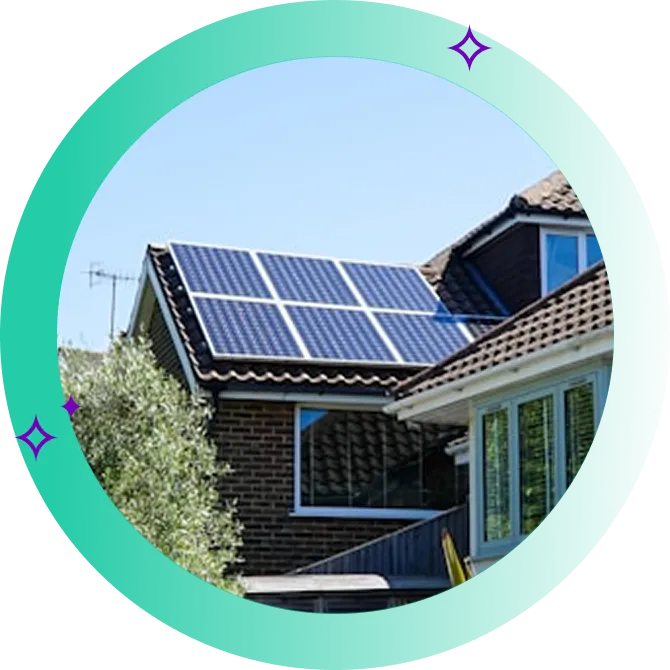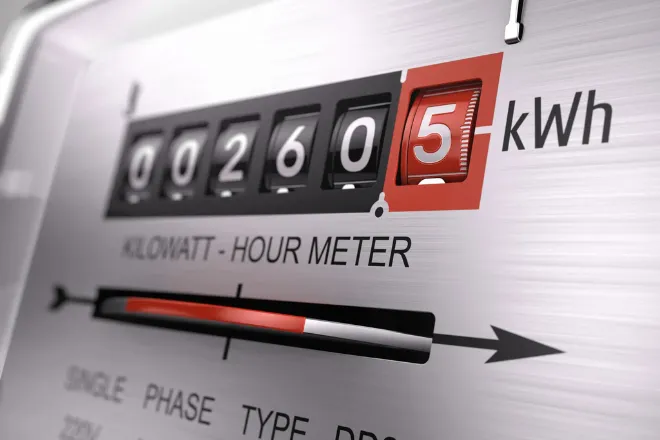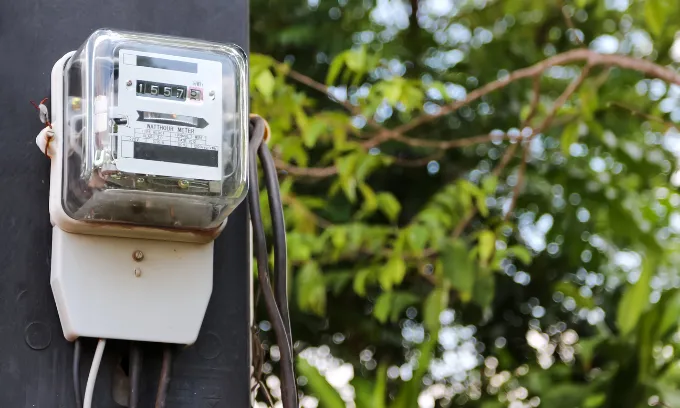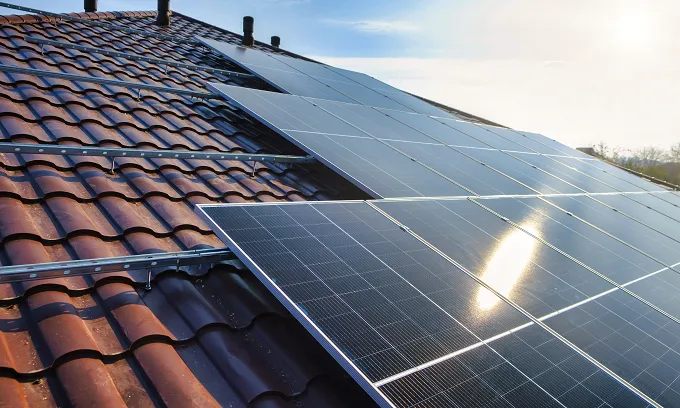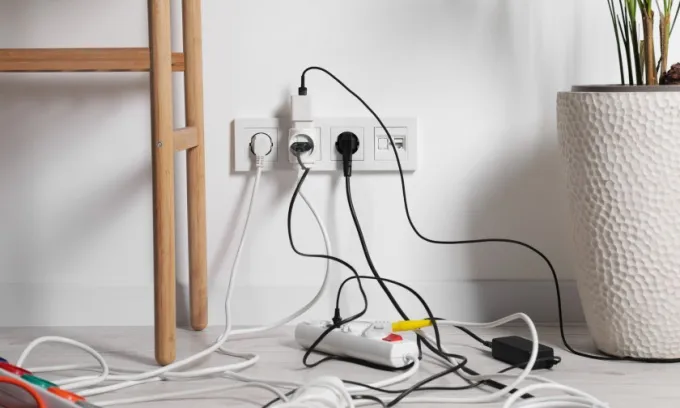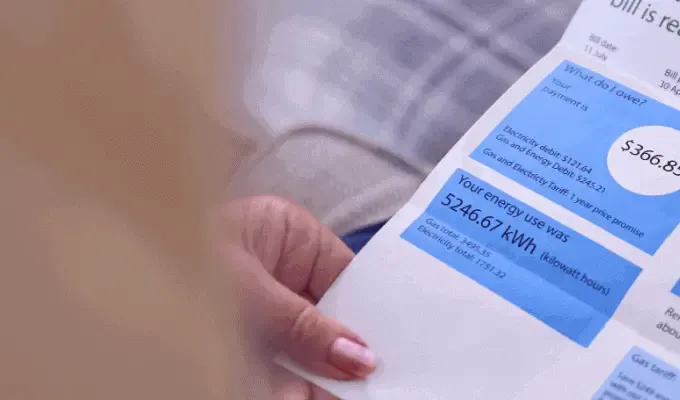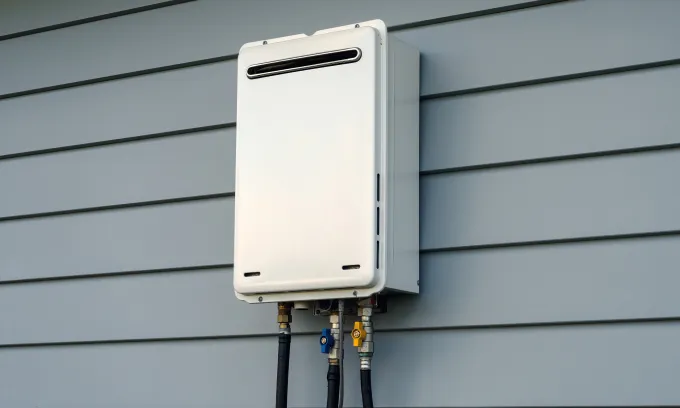Switching to a solar-friendly electricity plan
- Review your current plan: Check if there’s any exit or termination fees, as well as checking your current rates so you can compare other plans.
- Determine your energy needs: Knowing how you consume energy can help you figure out the tariff type that will save you the most. Are there times of day when you use more energy? Do you have electricity-draining appliances such as a pool pump or heated floors? How does your typical usage change each season?
- Complete Canstar’s quick, easy and free energy switching questionnaire and compare your results. You’ll want to look at:
- The average annual cost of each plan and how it compares to the electricity reference price.
- The plan’s daily supply charge and usage rate in kWh, and if these are variable or fixed.
- If there are any discounts offered.
- The solar feed-in tariff (FiT).
- New customer discounts or credits.
- Keep an eye out for where a provider ranks in Canstar’s Most Satisfied Customers ratings in your state.
- Once you’ve found the right plan, follow the link in our tool if available, or head to the provider’s site/give their customer service number a call to sign up.
- Unless you’re moving, you won’t need to contact your old electricity provider when switching.
- Look out for a welcome pack from your new provider and confirmation your service has changed.
- Your new plan will list a ‘benefit period’ where conditions such as discounts, memberships or fixed rates apply—usually 12 months.
Solar feed-in tariffs (FiT)
What is a solar feed-in tariff (FiT)?
A solar FiT is a rate paid to customers who export their solar-generated electricity back into the grid. A FiT is calculated in kWh exported, and is applied as a credit on your electricity bill.
FiTs can vary between states, providers and plans, so it’s important to check what’s on offer when comparing solar options. Canstar’s tools allow you to sort plans by highest FiT rates, in addition to seeing the estimated annual cost.
What types of solar FiTs are available?
- Single rate solar FiTs: Customers are paid a flat price in c/kWh for all the solar they export, no matter the time of day.
- Time-varying solar FiTs: Similar to time-of-use tariffs, in that the FiT rate varies depending on the time of day. Solar exported in the peak period (usually 4pm to 9pm weekdays) receives a higher FiT, while off-peak times receive the lowest FiT.
What is the difference between net metering and gross metering?
There are two ways to measure solar power — net metering and gross metering.
- Gross metering: All the electricity your solar panels generate is fed back into the power grid, typically in exchange for a solar FiT.
- Net metering: The solar electricity you generate is first used to power your home, with only the excess being exported into the grid.
Gross metering was initially a popular option when premium solar FiTs were available. As these premium FiTs are being phased out, many households find using their solar energy more beneficial than exporting it.
If your electricity usage rate is higher than your FiT, you’re probably better off using your solar power in your home instead of selling it all to the grid.
Solar FiTs by state
Find the best solar FiTs in your state:
- Best Solar Feed-in Tariff NSW
- Best Solar Feed-in Tariff VIC
- Best Solar Feed-in Tariff QLD
- Best Solar Feed-in Tariff SA
Solar electricity plans and prices
A solar electricity plan is an energy retailer’s dedicated plan or offer that's designed for solar customers only. Solar energy plans typically come with a significantly higher FiT than a retailer’s standard electricity plan, often between 10c/kWh and 12c/kWh.
Some solar plans are only offered to customers who meet certain criteria: for example, installing their solar system through a retailer’s preferred installer, or having a system that doesn’t export over a certain limit.
It's important to remember that solar offers with a high FiT may also come with higher usage and supply charges, or set benefit periods.
What to look for when comparing solar electricity plans
Solar owners don’t need to be on a solar-specific electricity plan, but plans marketed to solar users often come with incentives.
Some of the things to look for when comparing electricity plans include:
- Average annual cost: Compare this to the reference price in your area—ideally, you want a plan that’s much less.
- Tariff type: Whether a plan has a single rate, time of use, controlled load or demand tariff.
- Usage rate: What you pay for each kWh of electricity your household uses, measured in c/kWh.
- Supply rate: The daily cost charged for staying connected to an energy network. Even if you don’t use any power, you will still need to pay the supply cost, which is charged in cents per day.
- Discounts: Any conditional or guaranteed discounts available, such as pay on time or direct debit.
- Solar FiT: The bill credit you’ll receive for exporting unused solar electricity to the grid.
- Fees and charges: Any additional charges that may occur as a result of you taking certain steps, such as paying late, opting to use a credit card, choosing paper bills or connecting or disconnecting your service.
- Switching offers: Any other offers or benefits , such as new customer discounts or credits—just make sure these aren’t glossing over higher usage or supply rates.
- Green or carbon neutral energy: If a plan features GreenPower, carbon neutral or renewable energy options.
Will the electricity plan with the highest solar FiT save me the most money?
While a generous solar FiT can help lower your bills, it can easily be cancelled out by a high electricity usage rate. Knowing how much electricity you use and are likely to export can help you determine if you’re better off on a plan with a lower FiT and a lower usage charge per kWh.
Some questions to ask when comparing solar electricity plans include:
- How much solar energy do my panels generate in a day?
- Will I still need to rely on the electricity grid for some of my power usage in daytime?
- Do I have battery storage?
With solar FiTs decreasing across most Australian states and territories, using the electricity your panels generate can be the best way to save on your energy bill.
Who is the best solar provider in Australia?
Canstar’s annual Most Satisfied Customers awards recognise the best-rated solar electricity providers in Australia. We base our results on the feedback of bill-paying customers like you in areas like value for money, customer service and overall satisfaction.
Our current 2025 winner is:
- Best-Rated Solar Energy Provider Nationally: Lumo Energy (2025)
How solar works in Australia
What is solar energy?
Solar energy is a type of renewable energy created by converting light from the sun into electricity. This energy can be used to replace or supplement the grid-supplied electricity you buy from an energy retailer.
A home solar energy system typically uses photovoltaic (PV) solar panels and an inverter to collect sunlight and convert it into usable electricity. It’s also possible to have a solar thermal system that turns sunlight into heat, which can heat your home or hot water system.
How do solar panels work?
Solar panels work by absorbing sunlight and converting it into electricity through what’s called the photovoltaic effect (PV). This is how it works:
- Solar panels are typically made from silicon PV cells infused with phosphorus and boron, which create an electric field inside each cell.
- When sunlight hits the solar PV cells, a reaction occurs that releases electrons.
- These electrons are forced by the electric field out of the cell: they are then collected by electricity-conducting metal surrounding the PV cell that is connected to other PV cells in the panel.
- The movement of electrons in the same direction creates a direct current (DC), which is then transported by wires to a solar inverter.
- The inverter converts this DC electricity into the alternating current (AC) that you use to power your home.
- You can then use this energy at home, store it in a battery, or export it to the electricity grid.
The main parts of a solar panel system include:
- Solar panels: Flat, silicon panels that are used to convert sunlight into electricity. They are composed of multiple small solar PV cells, which are laid on in a grid pattern to absorb sunlight.
- Inverter: The device that converts the DC electricity generated by your panels into usable AC electricity.
- Charge controller: A device that manages the flow of electricity from your panels by regulating the current and voltage. This helps prevent overcharging.
- Solar battery: A storage system for excess solar electricity that has not been used or exported to the grid. Solar batteries are not mandatory.
Your solar system may also include racking/mounting structures to fasten the panels to your roof, wiring and cables, and monitoring equipment.
How much energy does a solar panel produce?
As a general rule, a 1kW (kilowatt) solar system will produce between 3.5kWh (kilowatt hours) and 5kWh of electricity daily. A larger 4kWh system can produce between 14kWh and 20kWh each day.
Solar panel energy output will vary depending on factors, including:
- The number of cells per panel.
- The material used in your panels; for example, monocrystalline panels are more efficient than polycrystalline.
- Your location and climate.
- The angle, tilt and orientation of your panels.
- How many hours of daylight you receive.
- If there is anything shading or obstructing your panels.
How much does solar installation cost?
The cost of installing solar panels depends on your location, as well as the size and quality of the panels you’ve purchased.
Research conducted by Canstar in 2024 showed that the average solar panel cost across Australia was $5,111. However, this figure includes a variety of household sizes and system sizes.
Our survey also showed that the average solar package cost in 2024 — including panels, inverter, battery and installation — was $7,181 across Australia.
What is the solar payback period?
The payback period is the length of time it will take you to cover the cost of installing a solar power system through the resulting savings on your bills . It will depend on factors including:
- The number of solar panels installed
- Type of inverter
- Installation costs
- The chosen electricity plan, including usage rate and solar FiT
- How much of the generated solar energy is being used
- The degradation of the solar panels over their lifespan.
For a rough estimate, you can expect it to take between three to six years to pay off your system, depending on your location.
How much money can I save with solar panels?
Canstar research conducted in 2024 found that households with solar received $123 credit against their quarterly electricity costs, on average, when exporting their excess solar energy to the electricity grid in exchange for a solar FiT.
However, what you can save will depend on the size of your system, the energy plan you choose, the amount of electricity your household uses and how it uses it.
What solar concessions and rebates are available in Australia?
Solar rebates are government-backed financial initiatives designed to reward individuals and businesses for generating their own energy through solar power. These could be anything from credits, discounts and concessions on the cost of buying and installing solar, to discounted loans or finance products.
Below are some of the major rebate schemes available in Australia.
Small-scale Renewable Energy Scheme
The Small-scale Renewable Energy Scheme is an Australian Government-run solar initiative. Under this scheme, customers who install an eligible rooftop solar panel system under 100 kWh can earn what is known as a small-scale technology certificate (STCs). Earning STCs can reduce the upfront cost of solar installation.
STCs are calculated based on the amount of renewable energy the system will generate, with one STC equal to one megawatt hour (MWh). Generally, these certificates are sold on a customer’s behalf by their accredited solar installer to recoup a portion of the overall installation costs. STCs are usually valued at around $35 — $40 each, but prices fluctuate based on market demand.
Cheaper Home Batteries Program
Introduced in July 2025, the Australian Government’s Cheaper Home Batteries Program gives eligible households and businesses a discount of 30% on the upfront cost of installing a solar battery. Customers can claim a rebate of $372 for every kWh of their battery’s usable capacity.
Household Energy Upgrades Fund
The Household Energy Upgrades Fund offers discounted finance products for customers who wish to add qualifying energy upgrades to their home, such as solar PV, energy-efficient appliances, or renovations to improve their home’s energy efficiency. The program is available through participating financial institutions including CommBank, Westpac, Bank Australia, ING and Plenti.
Other solar rebates and incentives
Other solar options are available, but will vary between states, territories and even councils or local governments. You can search for schemes specific to your location at the Department of Climate Change, Energy, the Environment and Water website.
Solar batteries and storage
What is a solar battery?
A solar battery stores excess energy generated by your solar panels during the day, charging it for later use. This could be when sunlight conditions are poorer, in the event of a power outage, or in peak hours when grid demand is higher.
How much do solar batteries cost?
Research conducted by Canstar in 2024 found the average cost for a solar battery in Australia is $6,386. This includes batteries of all capacities and in all states.
What should I look for in a solar battery?
Some things to check when buying a solar battery include:
- Depth of Discharge (DoD): The ‘depth of discharge’ describes how much of the battery’s power (in percentage) can be discharged (e.g. 80%). A high DoD means you can use more of your battery’s stored energy before it needs recharging.
- Storage (kWh): A battery’s storage is measured in kWh. Nominal storage refers to the total amount of electricity that can be held. Usable storage refers to the total amount of electricity that can be used after factoring in the DoD.
- Power (kW): Power is measured in kW and refers to the maximum amount of electricity that a battery can discharge in any one moment. The more power, the faster the battery will discharge.
- Cycle: A ‘cycle’ refers to a discharge and recharge of a battery. It is often used as a unit of measure for battery life.
- Lifespan: A battery’s lifespan indicates how long it is expected to last before it severely degrades.
- Backup capabilities or Emergency Power Supply (ESP): Can the battery power a household whilst disconnected from the grid during a blackout or power outage?
Are there solar battery rebates or incentives available?
The Cheaper Home Batteries Program is available Australia-wide and offers a saving of around 30% on the upfront purchase and installation costs of new batteries.
Other state and territory rebates may be available to eligible solar buyers.
Is battery storage worth it?
A solar battery can help reduce or even eliminate your reliance on the grid. Batteries are useful for homes on time of use electricity plans, as you can store power to use during peak times when grid energy is more expensive. If you live in an area prone to power outages, solar batteries may also be beneficial.
Overall, the best way to know if a solar battery is worth it is by assessing your energy needs and usage and talking to a solar installer.
Is a solar system worth it?
Whether installing a rooftop solar system is worth it or not will depend on how you use it. For most customers, worth is based on how much they can save on their electricity spend.
Aside from solar FiTs, a rooftop solar system can slash your power bills through the following means:
- Net meter: A net meter allows customers to redirect solar-generated electricity to power their appliances instead of exporting it to the grid. In practice, this option saves more money than most FiTs.
- Off-grid system: If you install a large enough system and solar battery (to store excess solar generation for use when the sun is down), you could sever your connection to the grid, solely relying on your system’s solar generation.
- If you’re on a ToU tariff: If you have a solar battery installed, you can opt to recharge it with cheaper electricity during off-peak hours in the day to power your home during peak hours. This also applies to controlled loads.
However, how much you save will depend on your system’s payback period or the time taken for your system’s savings to cover the upfront costs.
This will depend on:
- The size, make and model of your solar panels, inverter and solar battery (optional).
- Installation costs.
Once your solar earnings exceed your upfront investment, you’ll start to earn ‘real’ savings. If you’re keen on installing a solar system, you can visit our page on the best solar installers in Australia, based on real feedback from real customers.
Keep in mind that solar FiTs come in two forms:
- A flat FiT means the rate you’re paid remains fixed throughout the day.
- Some FiTs offer higher rates for a capped amount of exported solar before dropping to a lower rate every day (e.g. 8c/kWh for the first 10kWh per day, 4c/kWh after).
However, like discounts, higher solar FiTs could translate into higher usage and supply charges — you may end up spending more than you’re earning from your FiT. Make sure you study a plan’s BPID and its rates carefully before signing up for it.
FAQs about solar energy in Australia
Pros of solar
- Solar can lower your power bills by reducing grid electricity use.
- It can also lower your personal carbon emissions.
- Excess power generated can be sold back to the grid.
- Solar panels can increase the value of your home.
- The cost of buying and installing a solar system is declining.
- Solar panels have a lifespan of 25 years or more.
- Solar systems are low-maintenance in terms of cleaning and repair.
Cons of solar
- Solar systems are an upfront investment of thousands of dollars.
- On average, it takes three to six years to recoup the upfront cost through lower power bills.
- Solar battery storage costs extra.
- Panels require consistently sunny weather for optimum output.
- Not all roofs are the right size, shape or direction for solar.
- Trees or buildings that shade panels can impact performance.
- Panel manufacturing and disposal have environmental impacts.
There isn’t a single ‘best’ FiT in Australia. Solar FiT offers depend on your location and the conditions of the provider’s plan. You can compare solar FiTs and which would best work for you with Canstar’s free comparison tool.
Some fixed rate plans can set the solar FiT for the duration of your contract (usually 12 months). You'll need to read the terms and conditions of your energy plan to check.
Solar FiTs on variable rate plans can be changed during your contract, but providers must give customers at least five business days’ notice.
You’re free to switch energy providers at any time, even if you have solar panels. However, if you’re on a contract you may need to pay an early exit fee, which is outlined in your electricity plan’s terms and conditions.
Here are some tips to help reduce your electricity consumption and bill:
- Saving heavy energy usage for the peak solar generation hours where possible (from 10am to 3pm).
- Installing a solar battery.
- Installing more energy-efficient appliances and fittings, such as LED lights, appliances with a higher energy rating, and water-saving showerheads.
- Minimising hot water use where possible — e.g. use eco or cold water settings on appliances.
- Checking the hot water system annually for leaks or issues that could reduce its efficiency.
- Improving home insulation to make heating and cooling more effective, e.g. ceiling and wall insulation, double-glazing windows and sealing draughts.
Your solar FiT will vary based on your choice of electricity plan, your energy provider and distribution network.
In NSW, VIC, SA, QLD and the ACT, solar FiTs are ultimately determined by your electricity provider, so regional customers aren’t necessarily disadvantaged.

